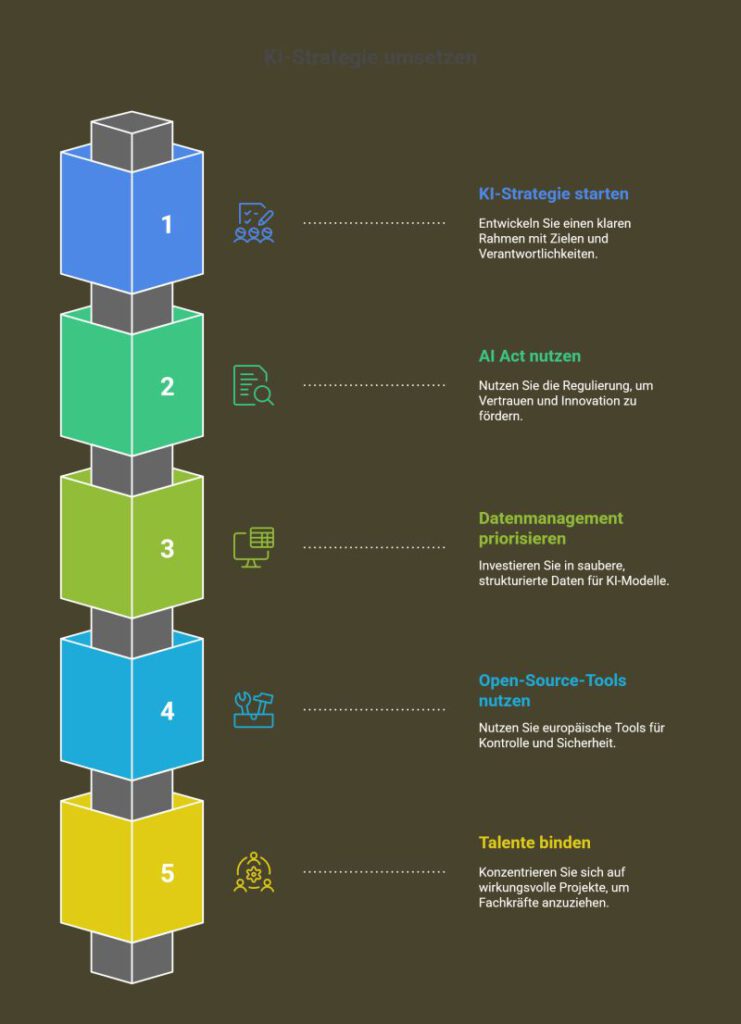Billions in investments, national AI gigafactories, real-world labs, ethical guidelines, and competence centers – on paper, Germany and the EU have everything needed to become global AI leaders.
But the reality in 2025 paints a more nuanced picture:
📈 Excellent research – but often disconnected from practical application
🔐 Strict regulation – increasingly acting as an innovation brake
🚀 High political ambition – but slow implementation among SMEs
🌍 Global competition for talent – and Europe is too often on the losing side
👉 Key insights from the analysis:
- The talent shortage is structural – despite education initiatives, skilled professionals are migrating to the US and Asia.
- Technology transfer from research to market-ready products remains a weak point.
- Startups and SMEs often lack access to high-performance infrastructure (e.g, HPC, GPUs), even as gigafactories emerge.
- Regulation (AI Act, GDPR) is seen as necessary – but clear guidance on implementation and interpretation is missing.
- Scaling European AI solutions often fails due to financing gaps, fragmentation, and a lack of speed.
💡 My conclusion as an AI architect:
Europe has a solid foundation, but what’s missing is the structure at the top: transfer, usability, speed, and operational clarity.
It’s not enough to demand ethical AI – we must also make it practical, economical, and accessible.
The strategic groundwork is in place – now we need bold decisions, technical bridges, and concrete execution.
What do you think: Are ethical standards and political will enough?





